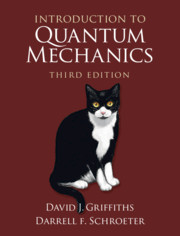Quantum Mechanics through Problems
This book contains more than 300 problems in quantum mechanics with accompanying solutions, covering topics that are commonly taught in first-year graduate physics programs. Special care is given to each problem's formulation, with detailed and extensive solutions provided to support understanding. The problems span a range of difficulties, from basic exercises to more challenging applications and extensions of the standard material. Students are required to think critically and incorporate physics and mathematical techniques learned previously or concurrently to solve the more challenging problems. Each chapter begins by framing the particular topic being examined with a short theory section that sets the context for and motivates the problems that follow. This text is well suited for self-study or as a useful supplement to the existing quantum mechanics textbooks for upper-undergraduate and graduate students, and their instructors.�
- The problems cover a great variety of topics and difficulty levels, making the text valuable to both upper-undergraduate and graduate students
- Extensive step-by-step solutions support students' learning and understanding, making the book an effective resource for self-study
- Problems incorporate a wide range of applications and extensions demonstrating how the basic building blocks of quantum mechanics can be used to construct physically relevant models
Product details
December 2024Adobe eBook Reader
9781009473675
0 pages
This ISBN is for an eBook version which is distributed on our behalf by a third party.
Table of Contents
- 1. The failure of classical physics
- 2. Wave-particle duality and wave mechanics
- 3. Schrödinger� equation: uncertainty relations
- 4. The one-dimensional Schrödinger equation: bound states
- 5. Scattering in one dimension
- 6. Mathematical formulation of quantum mechanics
- 7. Physical interpretation: postulates of quantum mechanics
- 8. The harmonic oscillator
- 9. Particle in a central potential: orbital angular momentum
- 10. Bound states in a central potential: applications
- 11. Angular momentum: general properties
- 12. Spin: charged particle in an electromagnetic field
- 13. Addition of angular momenta
- 14. Approximation methods
- 15. Scattering by a potential
- 16. Symmetry transformations of states and operators
- 17. Rotation matrices and the Wigner–�Eckart theorem: fine and hyperfine structure of energy levels in hydrogen-like atoms
- 18. Time-dependent perturbation theory
- 19. Systems of identical particles
- Bibliography
- Index.





